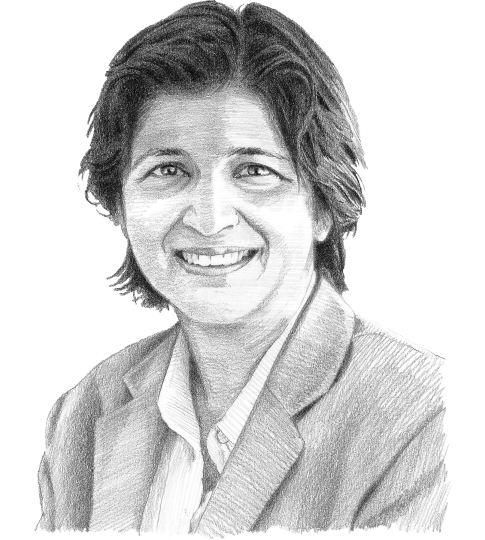Violence escalates in North Darfur
Sudan’s enduring civil war is intensifying as military factions battle for control, pushing the nation toward collapse.

In a nutshell
- Both the SAF and the RSF believe they have too much to lose to compromise
- Ethnic divides could ignite a broader regional conflict
- International mediation efforts will only partially stabilize the situation
There is no end in sight to the civil war in Sudan. The Sudanese Armed Forces (SAF) are trying to regain control of the country through the strategic city of Port Sudan, while the epicenter of the conflict has moved from Khartoum to North Darfur, where the paramilitary Rapid Support Forces (RSF) have been gaining ground. Several armed militant and civilian groups have joined the conflict, making regional contagion and state collapse increasingly likely.
Military rule and deep social divisions
Two trends that have shaped power dynamics in Sudan since it gained independence in 1956 remain entrenched and are driving today’s developments. First is the political hegemony of the military. Not only have the armed forces played a decisive role in overthrowing past leaders, they have also staged coups and started civil wars. They now control the country’s most important natural resources, namely mining, agriculture and oil.
The second trend is the endurance of deep regional, ethnic, religious and occupational divides – between North and South, Arabs and Christians, nomads and farmers. These fault lines led to the secession of South Sudan in 2011 after two civil wars.
Facts & figures
The centralized and repressive regime of Omar al-Bashir (1989-2019) kept a lid on those tensions. But, in an attempt to fill the power vacuum that followed his ousting, two factions of the military are now at war: the SAF under the leadership of General Abdel Fattah al-Burhan, and the paramilitary RSF under the leadership of Mohamed Hamdan “Hemedti” Dagalo. More than one year after the beginning of the current conflict, the humanitarian situation remains grim. More than 15,000 people have died and over 20 million Sudanese are facing acute food insecurity. Some 9 million of them have fled their home, amounting to 13 percent of the total global number of internally displaced people – making Sudan the largest displacement crisis in the world.
Last SAF stronghold in Darfur
As previously noted, the war continues because neither side can claim a decisive victory, and there are no incentives for a negotiated solution.
This was confirmed by the failure of the most recent mediation efforts led by Libya and Turkey. Following advances by the SAF, which had been losing territory and key infrastructure to the RSF in recent months, General al-Burhan declined to participate in the negotiations and declared there would be no peace until the RSF is defeated.
The epicenter of the war is now El Fasher, capital of North Darfur state, home to some 2 million people, including 800,000 internally displaced persons. After the RSF captured the strategic town of Mellit in April, a gateway to Libya critical for fuel supplies, El Fasher became the last stronghold of the SAF in the entire Darfur region.
Darfur is also where the Janjaweed Arab militia, the predecessor of the RSF, launched a scorched-earth campaign targeting non-Arab populations between 2003 and 2005. The confrontation between the SAF and the RSF in El Fasher, combined with previously neutral armed militias joining the fight as the conflict reignites latent ethnic tensions, has escalated the violence. As before in Darfur and in the Kordofan regions, civilians are being attacked because of their ethnicity. Members of the non-Arab Zaghawa community, an ethnic group that inhabits parts of Chad, Libya and Sudan, are being targeted by the RSF.
Regional and international alignments
While the conflict ravaging Sudan has been described as a forgotten war, there have been several mediation efforts led by both international and regional organizations like the United Nations, the African Union and the Intergovernmental Authority on Development, as well as countries like Saudi Arabia, the United States and Egypt. These efforts have systematically failed. There are limits to what external peace initiatives can accomplish, and many of those actors have diverging interests. Nevertheless, key regional players may continue pushing talks as, in their view, steering the war to a negotiated conclusion is in their strategic interests. Yet both the SAF and the RSF believe they can secure control of the country and its resources through a decisive military victory, however elusive that goal remains.
For the past decades, Iran and Sudan, both considered rogue states under the post-Cold War liberal order, have developed a close relationship. And while Iran initially adopted a neutral position, it is now supporting the SAF, providing drones that played a key role in the battle for Khartoum.
Egypt has supported the SAF since the beginning of this conflict. The two countries and their armed forces share similar trajectories and, for Egyptian President Abdel Fattah el-Sisi, a defeat for the SAF would be a cautionary tale. Saudi Arabia, Iran’s regional rival, also supports the SAF, at least officially. In practice, it has tried to maintain contact with both sides, assuming a leading role in mediation efforts. Riyadh’s careful diplomatic strategy is guided by two goals: contain Islamist influences in the region and secure a hegemonic position around the Red Sea.
More by Teresa Nogueira Pinto
- Senegal presidential election brings upstart Faye to power
- Stability remains elusive for Burundi
- India makes its play for Africa
The United Arab Emirates (UAE), in turn, is a major ally for the RSF. Over the past decade, Abu Dhabi has been expanding its footprint in Africa, namely by securing access to fertile land and investments in the mining sector. The country has become a leading importer of Sudanese gold, a business controlled by General Hemedti and the RSF leadership.
Russia, like Saudi Arabia, has been hedging its bets by playing both sides. Directly involved in gold-smuggling operations in Sudan, Russia’s Wagner group also has a close relationship with General Hemedti and has provided the RSF with surface-to-air missiles. The private military company’s profits in Sudan may have been used to fund Russia’s war against Ukraine. But last month’s announcement that Russia would develop a logistics hub in Sudan suggests that Moscow might be trading off more immediate gains for the long-term goal of securing a naval base in Port Sudan.
Scenarios
Peace will remain unattainable in the short to medium term, and the effects of the war will be far-reaching and long-lasting, especially in the most affected regions. Two scenarios must be considered.
More likely: Ceasefire and partial stabilization
Under a first, slightly more likely scenario, advances in mediation efforts led by Egypt and the UAE, as well as realignments in international support, would pave the way for a ceasefire and the stabilization of some regions, including Khartoum. However, clashes would continue in the Darfur region.
While all-out war would be avoided, this scenario still represents a high risk of regional contagion. Sudan borders countries also affected by displacement, armed conflict or risk of fragmentation, like the Central African Republic, Chad, Ethiopia, Libya and South Sudan. The consequences of the conflict in Sudan for neighboring countries, especially South Sudan and Chad, will become more apparent in the short to medium term.
Less likely: Sudan fragments
Under a second, slightly less likely – but entirely possible – scenario, Sudan would go through a process of territorial fragmentation. Like in Darfur, more groups, including civilians, could be forced to join the conflict. All warring factions may fear that a compromise would deprive them of power (including control over key resources and economic monopolies).
Under these circumstances, the RSF could intensify its efforts to secure control over Darfur, which accounts for almost one-third of Sudanese territory. This could lead to another regional conflict. The Zaghawa tribe targeted by the RSF spans across the borders of Sudan and into Chad, and the tribal conflict could easily spread.
For industry-specific scenarios and bespoke geopolitical intelligence, contact us and we will provide you with more information about our advisory services.










